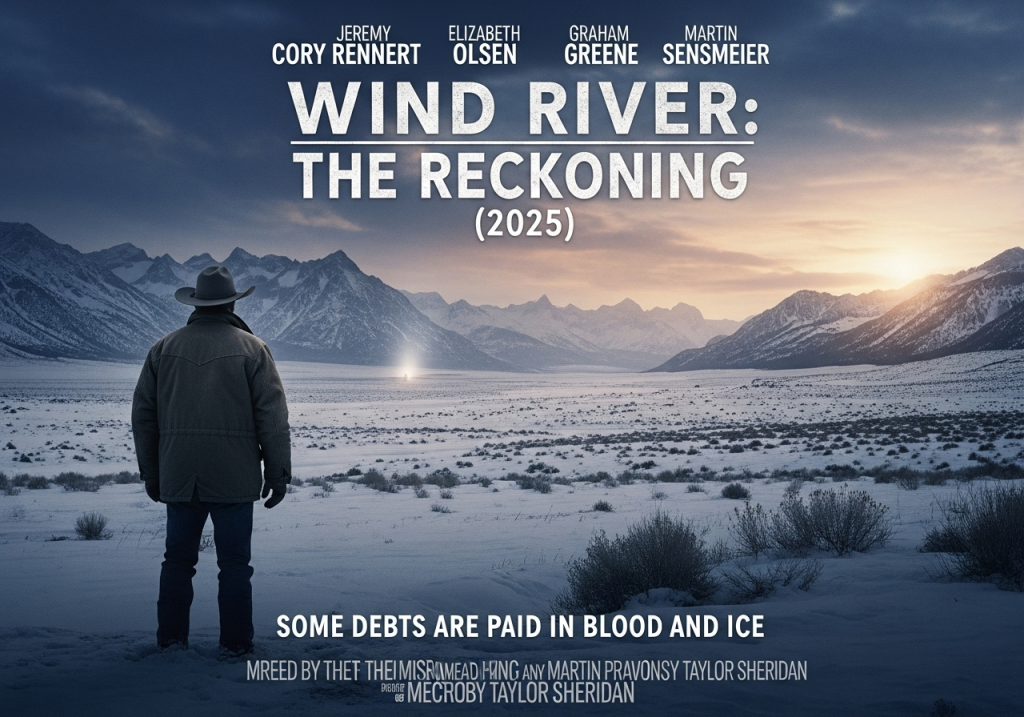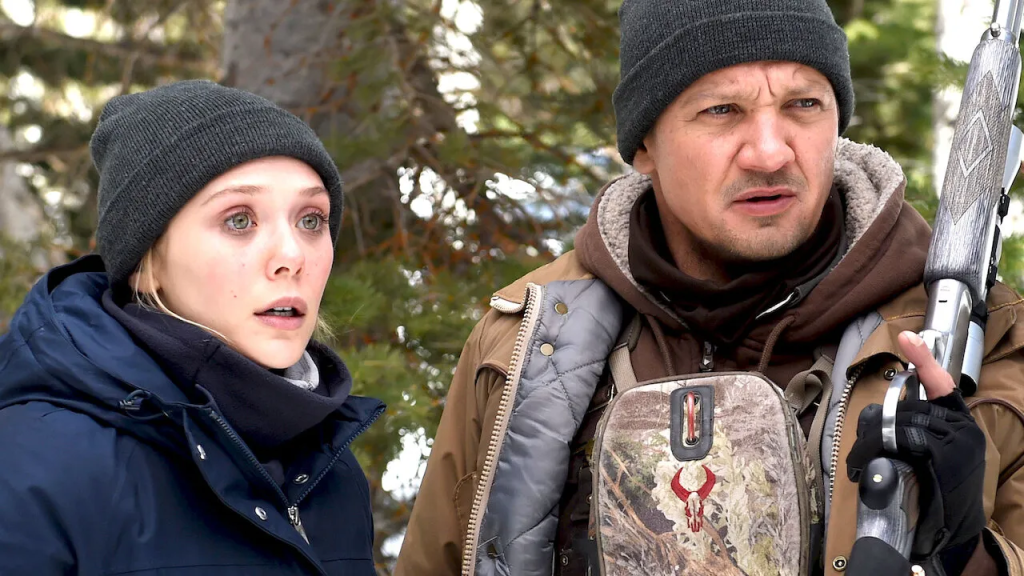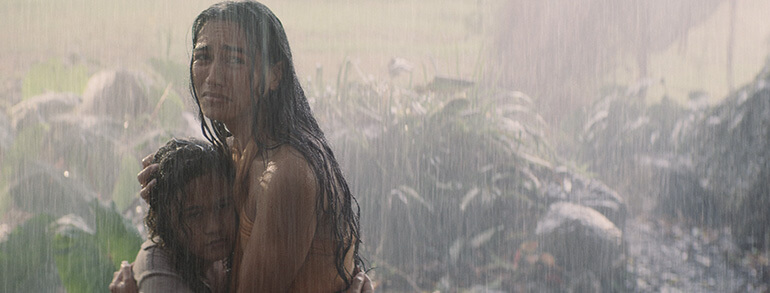Wind River: The Reckoning (2025) is a tense, emotionally raw continuation of the 2017 neo-Western crime thriller, returning to the stark, unforgiving landscapes of the Wind River Indian Reservation. Once again blending gritty realism with haunting beauty, the sequel delves deeper into the unresolved injustices faced by Indigenous communities while pushing its characters into even darker, more dangerous territory.

Jeremy Renner reprises his role as Cory Lambert, still grappling with the loss of his daughter and the traumatic events of the first film. Though he’s retreated further into solitude, Cory is drawn back into the fight when a new wave of violence sweeps through the reservation—this time involving a string of killings that point to a larger, more organized operation threatening the lives and land of the community.
Elizabeth Olsen returns as Jane Banner, now a more seasoned FBI agent who’s built a career trying to hold the system accountable from within. She reunites with Cory when the investigation leads her back to Wind River, where local authorities are overwhelmed, and corruption has embedded itself in both government and private industry.
The new case uncovers a chilling network involving missing Native men—overlooked by media and authorities—whose disappearances have gone largely uninvestigated. As Cory and Jane work together, they form a fragile alliance with a young tribal officer and an activist lawyer fighting for justice, even as powerful outside forces attempt to silence them.

As the investigation spirals toward a brutal and inevitable reckoning, Cory is forced to confront not only the evil men are capable of—but whether redemption is possible for someone who’s taken justice into his own hands before. The snowy terrain becomes both battleground and metaphor, a place where truth is buried deep and must be unearthed at great cost.

Wind River: The Reckoning is a slow-burn thriller that builds to an explosive climax, grounded in human pain, dignity, and the desperate need for justice. With Taylor Sheridan’s signature writing style—minimalist dialogue, moral ambiguity, and stark beauty—it’s both a gripping crime drama and a powerful meditation on loss, trauma, and the resilience of a people too long unheard.
